Buying Guide for the Best Portable Projectors
When shopping for a portable projector, it's important to focus on how and where you plan to use it. Portable projectors are great for traveling, business presentations, outdoor movie nights, or just moving between rooms. The key is to balance size and weight with the features you need for a clear and enjoyable viewing experience. Focus on your main use case—whether that’s ease of carrying, watching videos on the go, or presenting slides—and let that guide which specs matter most to you.Brightness (Lumens)Brightness, measured in lumens, tells you how powerful the projector’s light output is. This is important because it determines how vivid and visible your projection will be in different lighting conditions. Lower brightness, around 100–500 lumens, works for dim rooms or nighttime use; mid-range, 500–1000 lumens, is suitable for moderately lit rooms; higher, 1000 lumens and above, gives you better performance in brighter spaces. If you're mostly using the projector at home, in the dark, you might get by with lower brightness, while outdoor use or well-lit rooms require something brighter.
ResolutionResolution indicates how many pixels the projector can display, which affects how sharp and detailed your image looks. Common resolutions are 480p (basic, lower quality), 720p (HD, good for most uses), and 1080p (Full HD, best for movies or gaming). If you’re watching movies or care a lot about clarity, aim for at least 720p. For simple presentations or casual use, a lower resolution can be acceptable and will save battery and often weight.
Portability (Size and Weight)Since these projectors are designed to be portable, their size and weight matter a lot. Ultra-portable models are pocket-sized and very lightweight but may sacrifice brightness or resolution. Slightly larger ones may offer more features and power, but can be bulkier. Think about how often you’ll pack it in a bag or carry it by hand—if you need true portability, go as small and light as fits your must-have features.
Battery LifeBattery life shows how long you can use the projector untethered from power. It matters most if you want to use the projector outdoors or while traveling. Some projectors run for just an hour or two, while others can last for four hours or more. Match the battery life to your typical session length—if you want to watch a movie or give a long presentation without worrying about a power outlet, look for longer battery life.
Connectivity (Inputs and Wireless Options)Connectivity refers to how you hook up your devices—like laptops, phones, or streaming sticks—to the projector. Common features include HDMI ports, USB, and support for wireless connections like Bluetooth or Wi-Fi. Some rely on physical cables, while others can stream wirelessly. Consider what devices you plan to connect and how—if you want to easily play videos from your phone or use streaming apps, look for wireless options. For more traditional use, basic HDMI and USB ports might be enough.
Built-in SpeakerMany portable projectors include a built-in speaker for convenience. The quality and loudness can vary widely; small projectors often have weaker sound. If you’ll use it in quiet environments or with headphones, the built-in speaker is enough. For outdoor use or larger groups, you might want stronger audio or the ability to connect an external speaker.
Throw DistanceThrow distance is the space needed between the projector and the surface to get a clear, large image. Short throw projectors can project large images from a short distance, making them ideal for small rooms. Standard throw projectors need more space but can create bigger images in large areas. Decide based on where you’ll usually set up—tight spaces benefit from short throw, while outdoor or large space use works with standard throw.
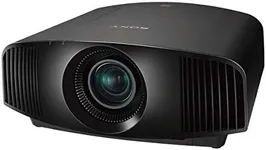


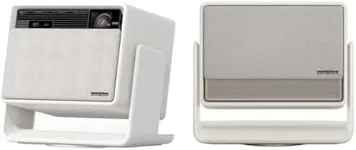
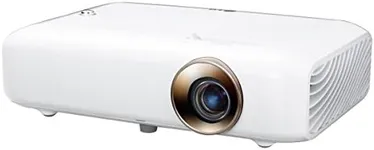
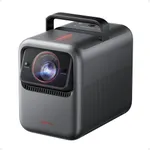






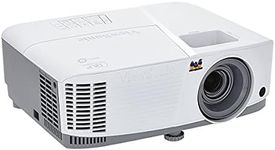
![[Netflix-Licensed/Dolby Audio]Outdoor-Projector 4K with Wifi 6 and Bluetooth,ONOAYO 800ANSI Native 1080P Portable Projector,Built-in Netflix/YouTube/PrimeVideo, Electric Focus Keystone Smart Projector](https://images-proxy.bestreviews.guide/ujcq8elVEzFILglgzRKmjHsud3k=/0x150/https://m.media-amazon.com/images/I/41ZCeZtGL7L._AC_CX679_.jpg)
![[Electric Focus] Projector with WiFi and Bluetooth, 20000LM Native 1080P Projector with Screen, YOWHICK Portable Movie Smart Projector, Home Projector 4K Supported for Phone/TV Stick /HDMI/USB Grey](https://images-proxy.bestreviews.guide/edWSwYJAsu8Ha2pTCW-pxRQ8m6k=/0x150/https://m.media-amazon.com/images/I/51hKaUodkvL._AC_CX679_.jpg)
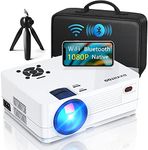
![[Sound by JBL & Built-in Battery] Yaber T2 Outdoor Projector with WiFi 6 and Bluetooth, Native 1080P Smart Movie Portable Projector for Inside and Outside, Compatible with TV Dongle (Not included)](https://images-proxy.bestreviews.guide/NzeeCSGCCMOXBFZ1A6c7Qo4f_oc=/0x150/https://m.media-amazon.com/images/I/414zF8u0G1L._AC_CX679_.jpg)




